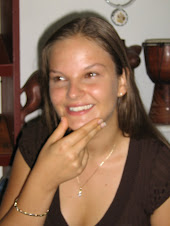
Dominican Republic Tourism Up 6.55% In First Half Of 2008
According to a recent report issued by the Dominican Republic (DR) Ministry of Tourism, overall visitors to the DR in the first half of 2008 increased by 6.55 percent compared to the same period in 2007.* Approximately 2.2 million guests selected the DR as their vacation spot of choice in the first half of 2008.
According to a recent report issued by the Dominican Republic (DR) Ministry of Tourism, overall visitors to the DR in the first half of 2008 increased by 6.55 percent compared to the same period in 2007.* Approximately 2.2 million guests selected the DR as their vacation spot of choice in the first half of 2008.
According to Central Bank of Dominican Republic (http://www.bancentral.gov.do/), as of July 31, 2008, there were 2,602,675 visitors to the DR, a 3.81 percent increase compared to the same period in 2007.
The U.S. continues as the largest visitors market with 32.2 percent followed by Canada at 22.6 percent, France with 9 percent, Spain with 5.7 percent, Germany with 5.6 percent and UK with 5 percent.
The most popular destination remains Punta Cana. The region’s international airport received approximately 53.5 percent of 2008 first half arrivals followed by Las Americas in Santo Domingo.
Puerto Plata International Airport received approximately 16.6 percent of the arrivals, followed by La Romana with 6.06 percent.
Affirming the DR’s popularity as a growing tourism destination, JetBlue will launch its first intra-Caribbean service with daily nonstop service between San Juan, Puerto Rico and the DR beginning Dec. 18, 2008. “The DR is dedicated to supporting JetBlue’s efforts to provide the Caribbean with additional air service,” said DR Vice Minister of Tourism Magaly Toribio. “JetBlue’s new flights to our capital city, Santo Domingo, will help meet the growing demand of visitors and enhance our collective economies.”
JetBlue will also offer nonstop service between Boston and Santo Domingo, with a once-daily "holiday shuttle" in December and January. The airline will bolster its frequency between John F. Kennedy International Airport and the DR by adding a fourth daily flight to Santiago, a third to Santo Domingo, and a second to Puerto Plata over the holiday season.
Delta Airlines will also add flights to the DR this winter with daily service from Atlanta to Puerto Plata beginning Dec. 20 and continue indefinitely. A second daily flight from Atlanta to Punta Cana will begin Dec. 20 - Jan. 4 and Feb. 14 - Apr. 19, 2009. Finally, Delta will add a second Saturday flight from Atlanta to Punta Cana International Airport beginning Jan. 5 - Feb. 12 and Apr. 20 - June 30, 2009.
Rich in history, the Dominican Republic’s first tourist was Christopher Columbus in 1492. Since then, it has developed into a diverse and luxurious destination offering both Dominican and European flavors to more than one million U.S. visitors each year. At 10,000 feet, the Dominican Republic is home to the highest point in the Caribbean. It also features some of the best golf courses and beaches in the world, the largest marina in the Caribbean and is a chosen escape for celebrities, couples and families.








